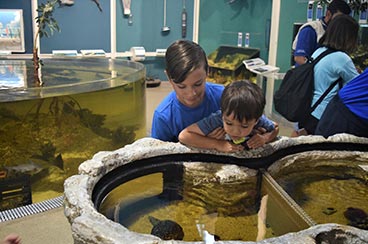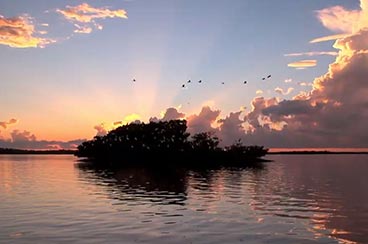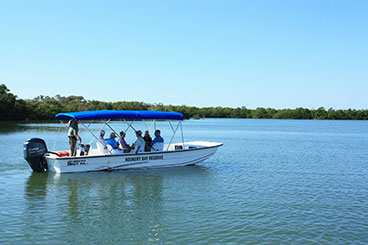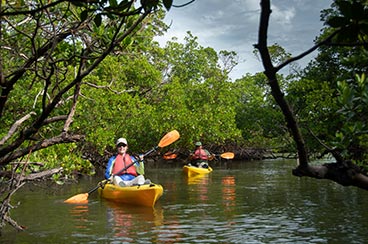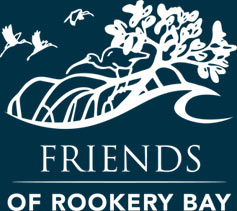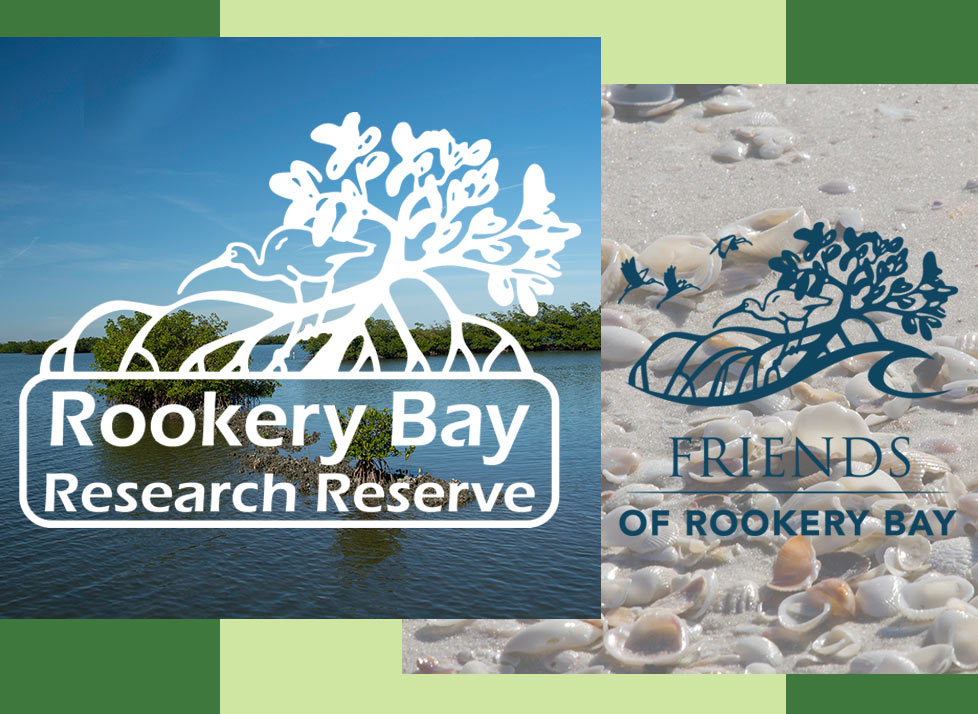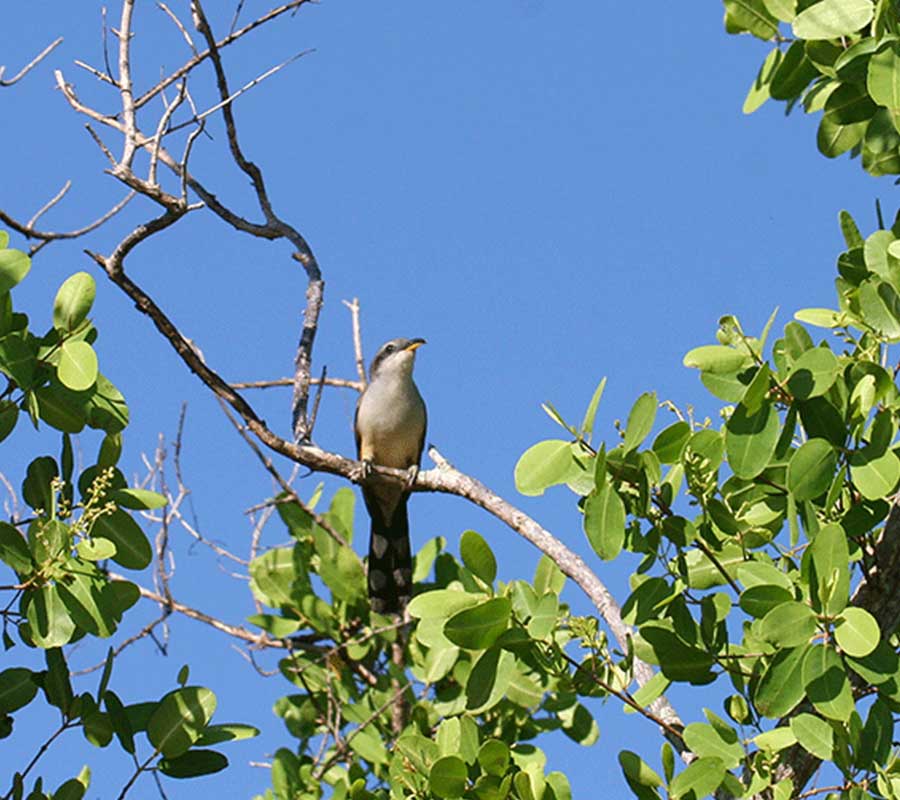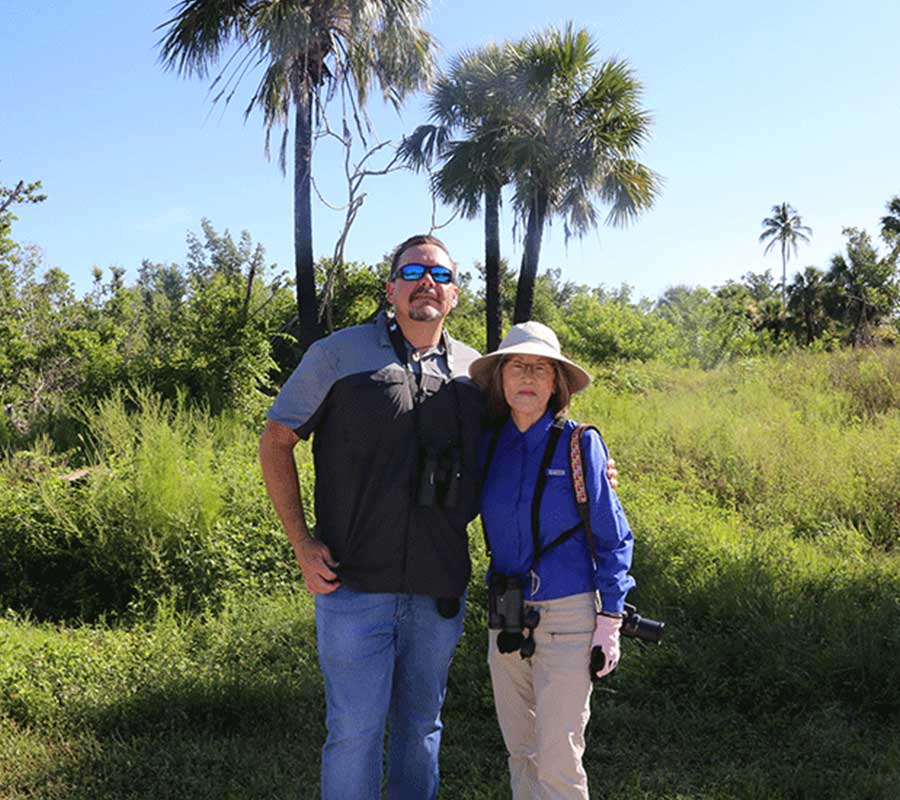I was skeptical when Keith asked if I wanted to zip down to Shell Island Road with him to see if he could find the Mangrove Cuckoo that someone on Facebook said they saw there two days earlier. Despite my hesitation, I grabbed the camera anyway, figuring maybe I’d find something else to shoot if the bird was not cooperating.
As we walked toward the parking lot at headquarters, I saw a woman with binoculars scanning the mangroves along the creek. I called to her to ask if she was looking for the cuckoo. She said she was and that the report she’d seen (on e-Bird) looked like the bird was here. I told her to follow us, and away we went.
We pulled into the gravel lot at the end of the long, windy road near the kayak launch where some paddlers were preparing for their adventure. We scanned the trees and slowly walked past the launch and down the trail toward the Children’s Column, which is a historic landmark on lower Henderson Creek. Suddenly, we spotted some movement in the canopy ahead. Could it be?
Keith trained his binoculars on the moving leaves and announced, dejectedly, “White-eyed Vireo” and kept walking. The vireo would have been a nice sighting on any other day, but on this day we were set on seeing the cuckoo. Birders literally go cuckoo for this cuckoo. Keith had seen one once before from a distance and heard another singing, and my only sighting was so quick that there was no way I could confirm it. Aki, the woman who joined us on this hunt, had never seen one and was really hoping to add this species to her “life list.
Mangrove Cuckoos are part of a widespread family that includes anis, roadrunners and two other cuckoos in North America. Yellow-billed Cuckoos are, by far, the most commonly observed cuckoo in Florida, and very easily confused with the mangrove variety, which is only found along Florida’s southwest coast from Tampa Bay down through the Keys. On numerous occasions that I’m aware of, people have visited Rookery Bay Reserve from around the nation or beyond, specifically for the purpose of getting a glimpse this bird. Mangrove Cuckoos are relatively uncommon and often very secretive. They are considered by birders to be “skulkers” for their habit of moving slowly and seldom, in thick vegetation.
We walked a little way further without seeing any other birds, but I did find a blooming limber caper, which is a shrub native to south Florida. It isn’t a commonly seen plant because it tends to only grow among mangroves along the water’s edge, sometimes as a tangled groundcover. It is the host plant for white and sulphur butterflies. Even thought it had only been a short trip, I was itching for something to photograph and was mildly appeased by this beauty.
We started heading back to the parking area, still scanning the trees. Suddenly, Keith exclaimed “there it is!” No way. He pointed to the patch of white mangrove trees between the gravel lot and the lagoon. We had walked right past these trees 10 minutes before.And then I saw it, sitting relatively still, barely aware of our arrival. We carefullly approached as I trained my 300 mm lens on it, and I started snapping. Talk about cooperative! It even moved up to a dead branch where it sat in the open, backlit by a cloudless sky. It sat there for a few minutes, allowing me to get this, my best shot of the bird, before it flew over our heads and across the road to a dead tree. It spent a few minutes hanging out there before dropping down in to the bush. It then began to call with a nasal croaking. All three of us reveled in our success.As we were getting ready to leave, another birder pulled into the lot and was very excited to see it, from much farther away than we did. I got back to my desk feeling very excited that I not only saw it, but got a decent picture to share. Enjoy!
Renee Wilson, Communications Coordinator
Please remember, maintaining a safe distance is imperative for a successful nesting season for all of Florida’s wild life.
Rookery Bay Research Reserve
Rookery Bay National Estuarine Research Reserve stretches across 110,000 acres of pristine mangrove forest, uplands and protected waters. We are committed to preservation through research, education, and land protection.

